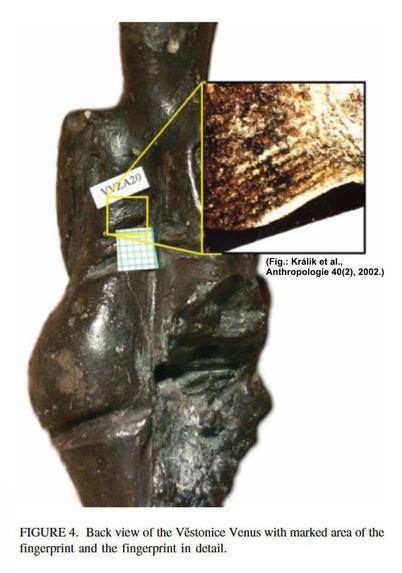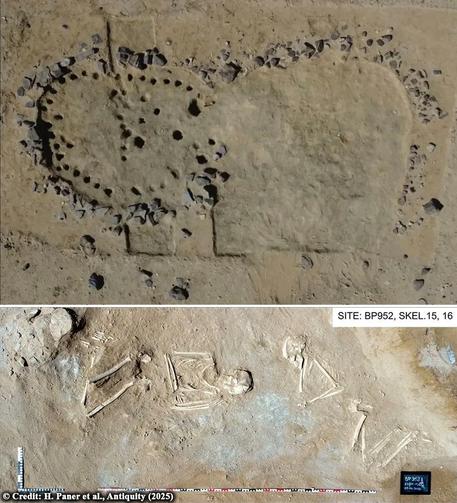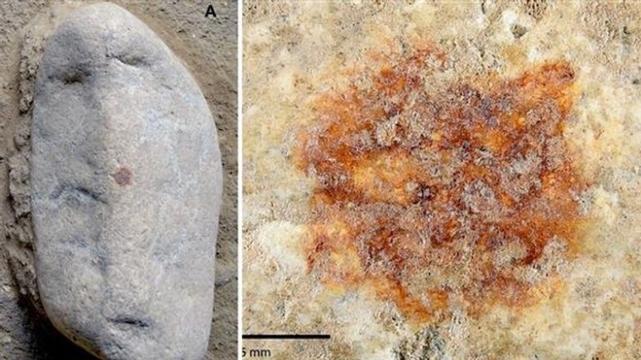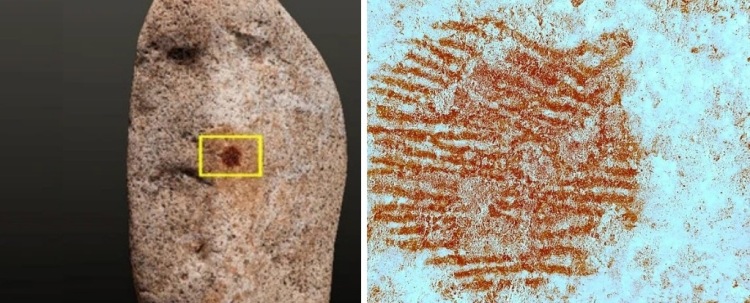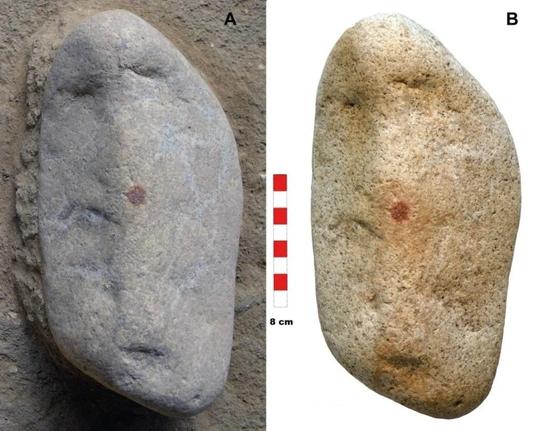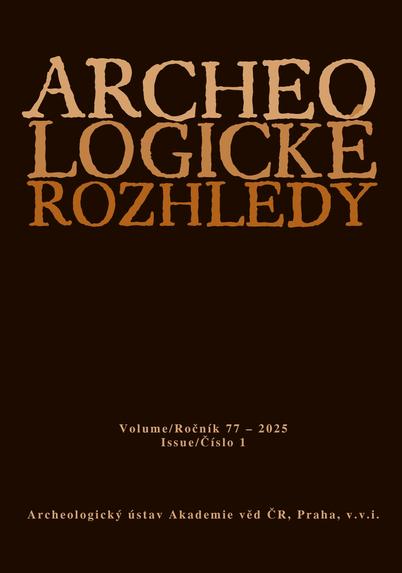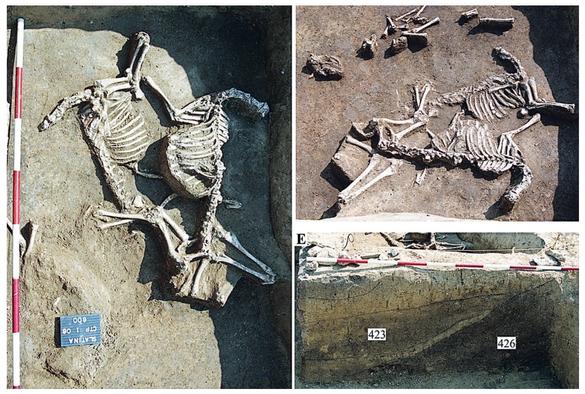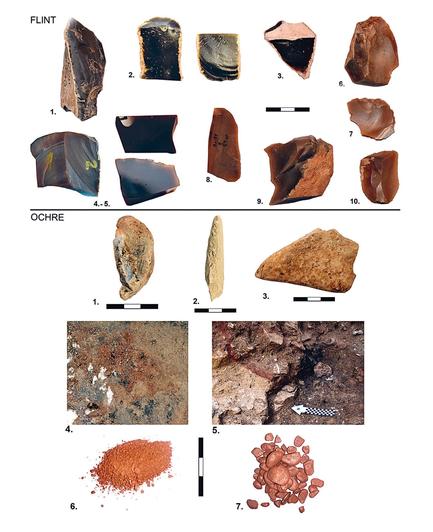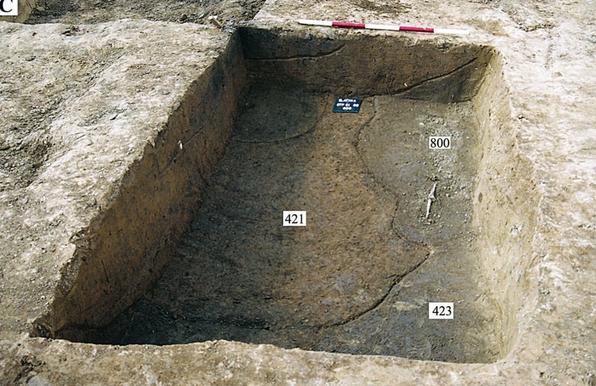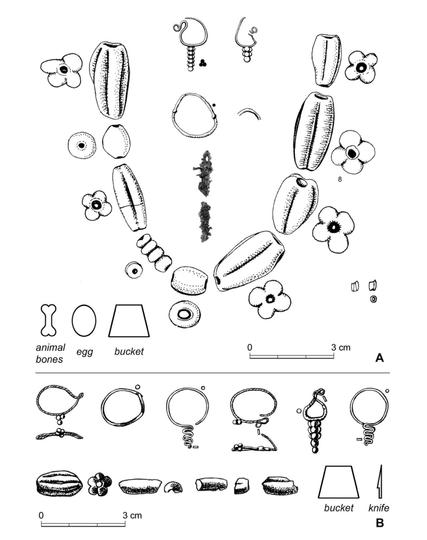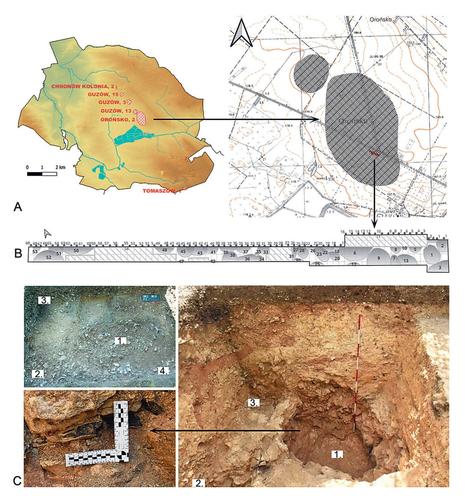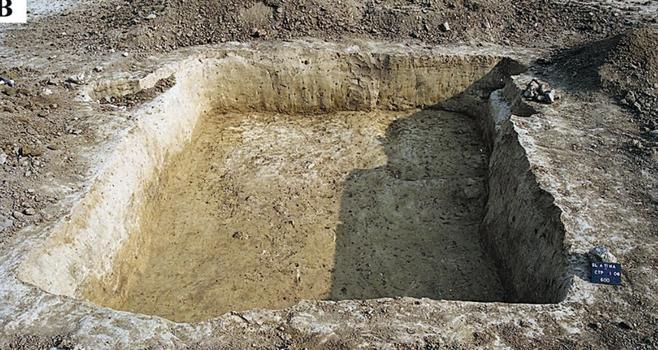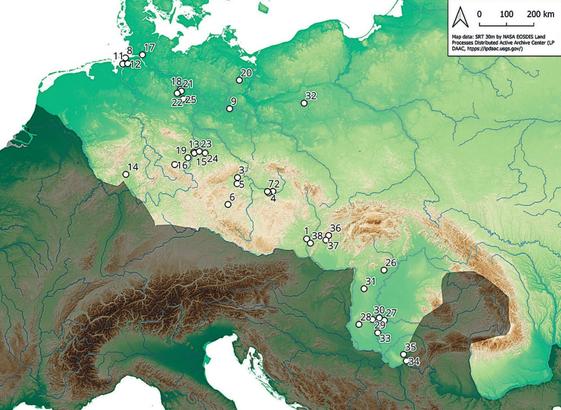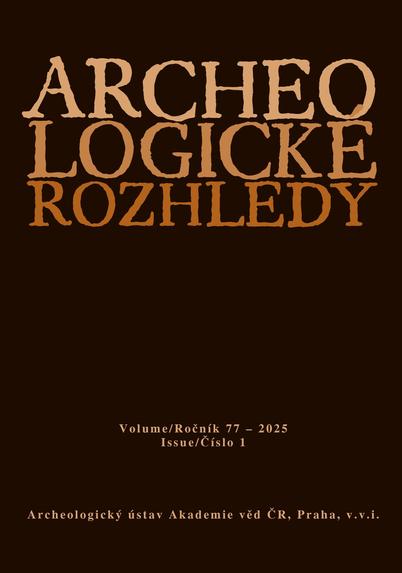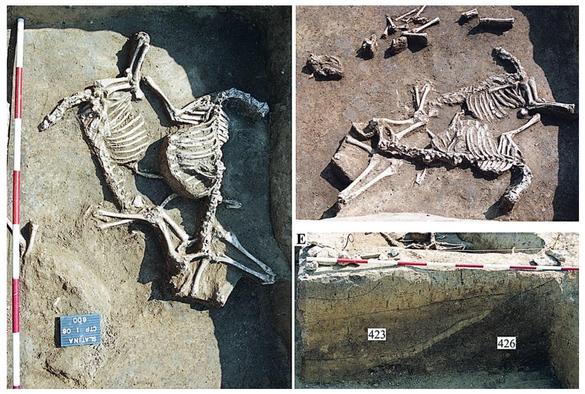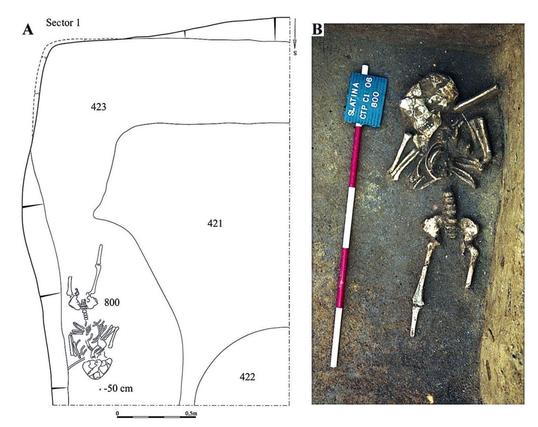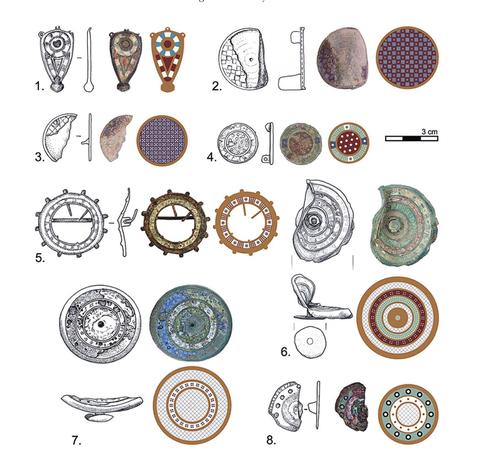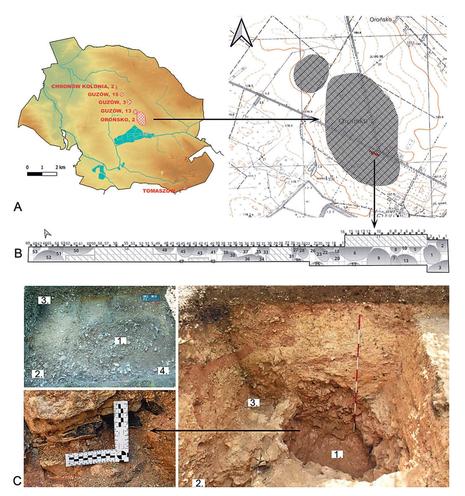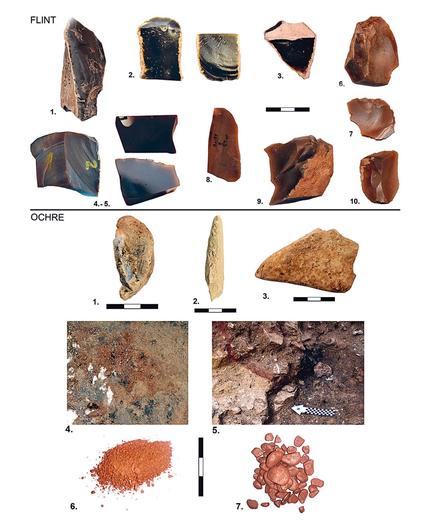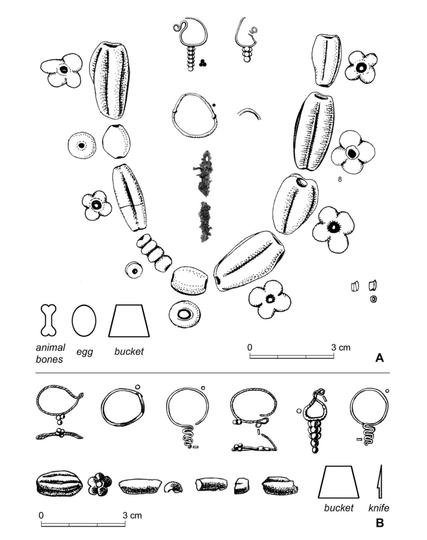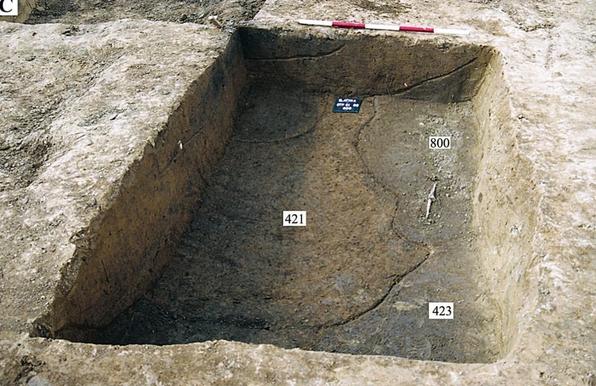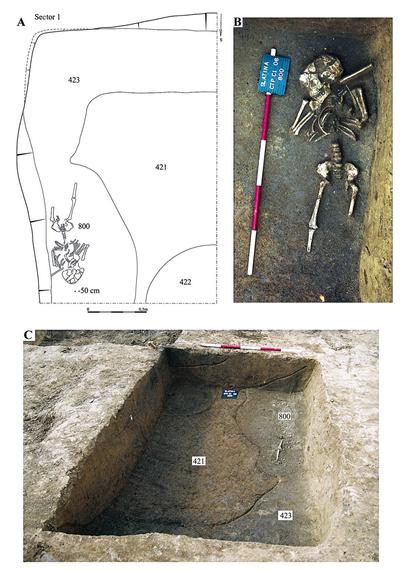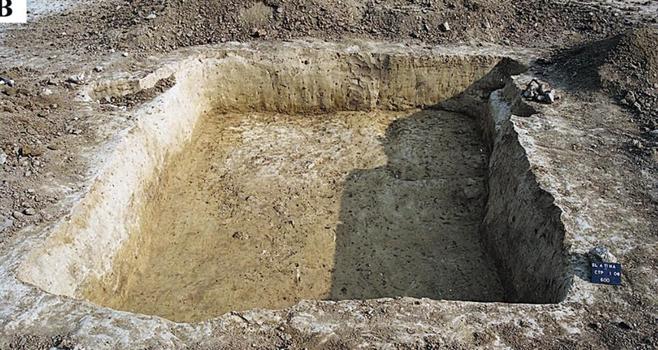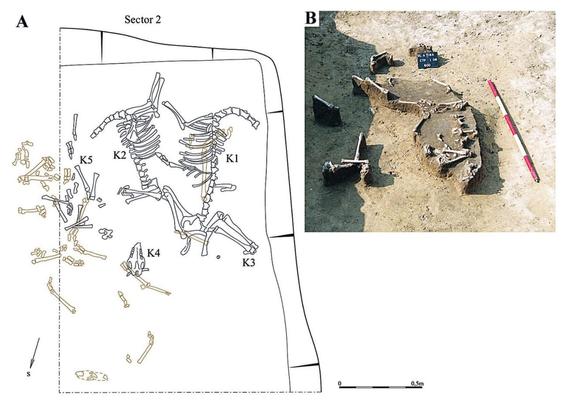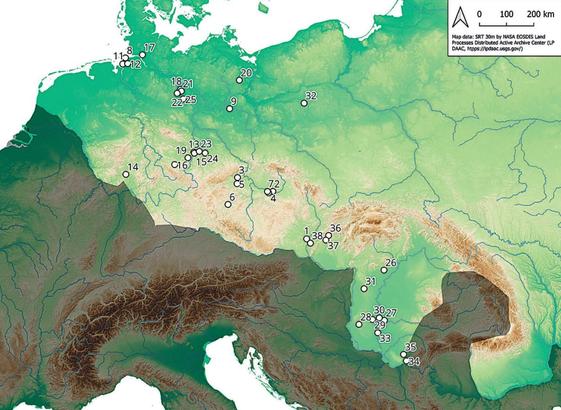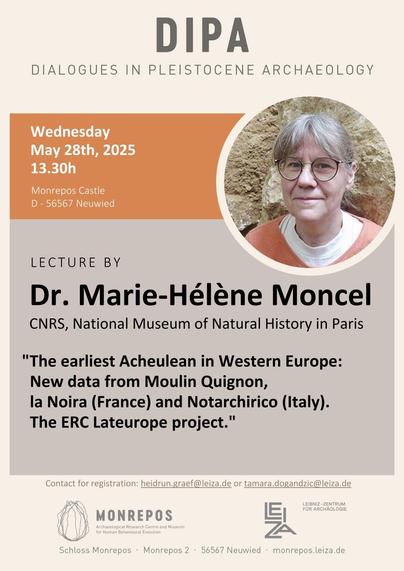The #fingerprint a #Paleolithic teenager - right there on one of those Ice Age "venus" figurines. In all its glory. 😲
www.academia.edu/109155602/Fi...
RE: https://bsky.app/profile/did:plc:anymxmaebsaiuan2sz7sat4e/post/3lq3wqzhabc2l
#Paleolithic
Polish archaeologists identify over 1,200 ancient sites in Sudan’s Bayuda Desert
Over 1,200 new archaeological sites were uncovered in Sudan’s Bayuda Desert by a Polish team of archaeologists, establishing the prehistoric and historic significance of the region once again...
More information: https://archaeologymag.com/2025/05/over-1200-ancient-sites-in-sudans-bayuda-desert/
Follow @archaeology
#archaeology #archeology #archaeologynews #bayudadesert #paleolithic #medieval
A Touch Across Time: The Neanderthal Fingerprint That Changed Everything
In the quiet, sun-dappled hills of San Lázaro, Spain, archaeologists recently stumbled upon an astonishing discovery—a simple red ocher fingerprint pressed deliberately onto a rock surface some 43,000 years ago. At first glance, this may seem humble: a fleeting human mark from deep history. But this fingerprint is far more profound. It belongs not to Homo sapiens—modern humans like you and me—but to our enigmatic cousins, the Neanderthals (Rodríguez-Hidalgo et al., 2024).
This tiny imprint is more than just an ancient mark. It’s a tangible, intimate connection to a Neanderthal individual, someone who stood exactly where researchers now stand, touching a stone in a purposeful act. So, what exactly does this discovery mean for our understanding of Neanderthals? Why is it so exciting, and why should it captivate us?
A Moment Captured in Time
Consider, for a moment, the sheer wonder of a fingerprint. Every single ridge and swirl is unique to an individual—a personal signature no one else shares. This particular Neanderthal fingerprint, vividly preserved in red ocher, offers an intimate snapshot from tens of thousands of years ago. The decision to press one’s finger onto the rock, leaving a deliberate mark, strongly suggests intentionality and symbolic expression (Zilhão, 2012).
Previously, many viewed Neanderthals as primarily practical, survival-focused beings who didn’t engage significantly in symbolic thought. Over recent decades, however, discoveries like shell jewelry, cave art, and now this fingerprint have profoundly reshaped that narrative. This fingerprint suggests a conscious, meaningful action—a symbolic gesture that hints at complex thought processes and an awareness of self and identity (d’Errico & Stringer, 2011).
Symbolism and Self-Awareness
When modern humans use art, we communicate ideas, emotions, or stories. Could the same be true for Neanderthals? The placement of the fingerprint wasn’t random; the stone was naturally shaped somewhat like a face. By enhancing its facial features with this print, the Neanderthal artist was engaging in representational thought, transforming a naturally occurring shape into something more—a representation with meaning beyond mere practicality.
This find challenges earlier assumptions about Neanderthal cognition, pushing the boundary of what we define as distinctly “human.” Symbolic behavior and self-awareness have often been considered hallmarks of modern human cognition. Finding evidence of this behavior in Neanderthals suggests that they shared far more cognitive and cultural complexity with us than previously thought (Hovers & Belfer-Cohen, 2013).
What We’ve Learned So Far
This single fingerprint can tell us a surprising amount. Forensic analysis has determined that it belonged to an adult male, offering a glimpse into the demographics of the site (Rodríguez-Hidalgo et al., 2024). Its remarkable preservation provides clues about Neanderthal material culture. Ocher, a naturally occurring mineral pigment, was clearly valued, collected, and used deliberately.
Studies of ocher use among both modern humans and Neanderthals show it was often employed in rituals, personal adornment, and symbolic contexts. Its presence on this stone strongly supports the interpretation of symbolic intent rather than mere practicality (Wadley, 2005).
New Avenues of Research
Where do we go from here? First, archaeologists can explore other Paleolithic sites with fresh eyes, looking for subtle symbolic marks or impressions previously overlooked. Discoveries like this fingerprint remind us that symbols and meaning-making activities may not always be grandiose. Sometimes, they’re understated yet powerful.
Second, interdisciplinary collaboration is crucial. Forensic science, pigment analysis, cognitive archaeology, and ethnography must come together to illuminate the broader context of such symbolic acts. Was this mark part of a social ritual or a personal statement? Did ocher carry particular cultural significance?
Third, this discovery encourages us to re-evaluate the archaeological record holistically. Perhaps other seemingly mundane artifacts conceal symbolic dimensions. Staying open to subtle details might reveal hidden narratives and richer cognitive worlds.
Implications for Science and Humanity
Archaeology thrives on asking better questions. Once, the core question about Neanderthals was whether they had symbolic capacity at all. Now, the focus shifts: What form did their symbolic behavior take? How widespread was it? What role did symbolism play in their social fabric?
This find also highlights the importance of site preservation and meticulous excavation. The fingerprint survived thanks to extraordinary preservation conditions—conditions increasingly threatened by climate change and human activity.
Importantly, this discovery prompts us to rethink human uniqueness. If symbolic expression developed independently in different hominin species, then symbolism may not be a rare cognitive anomaly but a fundamental aspect of hominin brain evolution. This challenges longstanding assumptions about our exclusive grip on culture and art.
Bridging the Millennia
Perhaps the most compelling aspect of this discovery is its intimacy. A fingerprint bridges tens of thousands of years, connecting two individuals across an unimaginable gulf of time. It evokes empathy, curiosity, and awe. We glimpse, however briefly, the emotional and intellectual world of a person long gone.
The emerging picture of Neanderthals is one of nuance and richness. They were not brutish outliers of evolution but thoughtful, creative beings with lives filled with meaning. This fingerprint deepens that narrative and elevates our appreciation for the breadth of human experience.
Final Reflections
The red ocher fingerprint from San Lázaro is a potent reminder that history is made not only through tools and bones but through the quiet, deliberate gestures of individuals. This ancient mark redefines what it means to be human and extends our story beyond the borders of Homo sapiens.
As scientific inquiry continues, each new discovery—no matter how small—adds to our collective understanding. The fingerprint from San Lázaro is a vivid testament that every one of us leaves an impression. Some fade. Some, like this, endure.
Let it inspire us to keep asking questions, stay curious, and embrace the deep history that connects us all.
References:
d’Errico, F., & Stringer, C. (2011). Evolution, revolution or saltation scenario for the emergence of modern cultures? Philosophical Transactions of the Royal Society B: Biological Sciences, 366(1567), 1060–1069. https://doi.org/10.1098/rstb.2010.0303
Hovers, E., & Belfer-Cohen, A. (2013). On variability and complexity: Lessons from the Levantine Middle Paleolithic record. Current Anthropology, 54(S8), S337–S357. https://doi.org/10.1086/673389
Rodríguez-Hidalgo, A., et al. (2024). Neanderthal fingerprint on ochre-enhanced stone at San Lázaro, Spain: Symbolic behavior in the Middle Paleolithic. Archaeological and Anthropological Sciences, 16(2). https://doi.org/10.1007/s12520-024-01876-2
Wadley, L. (2005). Putting ochre to the test: Replication studies of adhesives that may have been used for hafting tools in the Middle Stone Age. Journal of Human Evolution, 49(5), 587–601. https://doi.org/10.1016/j.jhevol.2005.06.007
Zilhão, J. (2012). Personal ornaments and symbolism among the Neanderthals. In J.-J. Hublin & M. P. Richards (Eds.), The Evolution of Hominin Diets (pp. 35–49). Springer.
#AncientMind #AnthropologyMatters #Archaeology #CaveArt #CognitiveEvolution #DeepHistory #EarlyHumans #HomininCulture #HumanOrigins #Imagination #Neanderthal #NeanderthalArt #Paleoanthropology #Paleolithic #PaleoPost #PaleoPostDeepHistoryNeanderthalArtCaveArtAnthropologyMattersScienceCommunicationHomininCultureCognitiveEvolutionPrehistoricExpression #PrehistoricArt #RockArt #ScienceCommunication #SymbolicArt #earlyHumans #evolution #genetics #history #Science
Tens of thousands of years ago, people played with rocks.
Archaeoethnologica: Archeologické Rozhledy Nº 77/1 - 2025
+INFO in: https://archaeoethnologica.blogspot.com/2025/05/archeologicke-rozhledy-n-771-2025.html
#Archaeology #Prehistory #ClassicalArchaeology #MedievalArchaeology #paleolithic #neolithic #eneolithic #Rome #Poland #Bohemia #networks #materialcutlure #journals #openaccess #pottery #lithics #mosaic #animals
Archaeoethnologica: Archeologické Rozhledy Nº 77/1 - 2025
+INFO in: https://archaeoethnologica.blogspot.com/2025/05/archeologicke-rozhledy-n-771-2025.html
#Archaeology #Prehistory #ClassicalArchaeology #MedievalArchaeology #paleolithic #neolithic #eneolithic #Rome #Poland #Bohemia #networks #materialcutlure #journals #openaccess #pottery #lithics #mosaic #animals
Archaeoethnologica: Archeologické Rozhledy Nº 77/1 - 2025
+INFO in: https://archaeoethnologica.blogspot.com/2025/05/archeologicke-rozhledy-n-771-2025.html
#Archaeology #Prehistory #ClassicalArchaeology #MedievalArchaeology #paleolithic #neolithic #eneolithic #Rome #Poland #Bohemia #networks #materialcutlure #journals #openaccess #pottery #lithics #mosaic #animals
Archaeoethnologica: Archeologické Rozhledy Nº 77/1 - 2025
+INFO in: https://archaeoethnologica.blogspot.com/2025/05/archeologicke-rozhledy-n-771-2025.html
#Archaeology #Prehistory #ClassicalArchaeology #MedievalArchaeology #paleolithic #neolithic #eneolithic #Rome #Poland #Bohemia #networks #materialcutlure #journals #openaccess #pottery #lithics #mosaic #animals
Archaeoethnologica: Archeologické Rozhledy Nº 77/1 - 2025
+INFO in: https://archaeoethnologica.blogspot.com/2025/05/archeologicke-rozhledy-n-771-2025.html
#Archaeology #Prehistory #ClassicalArchaeology #MedievalArchaeology #paleolithic #neolithic #eneolithic #Rome #Poland #Bohemia #networks #materialcutlure #journals #openaccess #pottery #lithics #mosaic #animals
Archaeoethnologica: Archeologické Rozhledy Nº 77/1 - 2025
+INFO in: https://archaeoethnologica.blogspot.com/2025/05/archeologicke-rozhledy-n-771-2025.html
#Archaeology #Prehistory #ClassicalArchaeology #MedievalArchaeology #paleolithic #neolithic #eneolithic #Rome #Poland #Bohemia #networks #materialcutlure #journals #openaccess #pottery #lithics #mosaic #animals
Archaeoethnologica: Archeologické Rozhledy Nº 77/1 - 2025
+INFO in: https://archaeoethnologica.blogspot.com/2025/05/archeologicke-rozhledy-n-771-2025.html
#Archaeology #Prehistory #ClassicalArchaeology #MedievalArchaeology #paleolithic #neolithic #eneolithic #Rome #Poland #Bohemia #networks #materialcutlure #journals #openaccess #pottery #lithics #mosaic #animals
Archaeoethnologica: Archeologické Rozhledy Nº 77/1 - 2025
+INFO in: https://archaeoethnologica.blogspot.com/2025/05/archeologicke-rozhledy-n-771-2025.html
#Archaeology #Prehistory #ClassicalArchaeology #MedievalArchaeology #paleolithic #neolithic #eneolithic #Rome #Poland #Bohemia #networks #materialcutlure #journals #openaccess #pottery #lithics #mosaic #animals
Archaeoethnologica: Archeologické Rozhledy Nº 77/1 - 2025
+INFO in: https://archaeoethnologica.blogspot.com/2025/05/archeologicke-rozhledy-n-771-2025.html
#Archaeology #Prehistory #ClassicalArchaeology #MedievalArchaeology #paleolithic #neolithic #eneolithic #Rome #Poland #Bohemia #networks #materialcutlure #journals #openaccess #pottery #lithics #mosaic #animals
Archaeoethnologica: Archeologické Rozhledy Nº 77/1 - 2025
+INFO in: https://archaeoethnologica.blogspot.com/2025/05/archeologicke-rozhledy-n-771-2025.html
#Archaeology #Prehistory #ClassicalArchaeology #MedievalArchaeology #paleolithic #neolithic #eneolithic #Rome #Poland #Bohemia #networks #materialcutlure #journals #openaccess #pottery #lithics #mosaic #animals
Archaeoethnologica: Archeologické Rozhledy Nº 77/1 - 2025
+INFO in: https://archaeoethnologica.blogspot.com/2025/05/archeologicke-rozhledy-n-771-2025.html
#Archaeology #Prehistory #ClassicalArchaeology #MedievalArchaeology #paleolithic #neolithic #eneolithic #Rome #Poland #Bohemia #networks #materialcutlure #journals #openaccess #pottery #lithics #mosaic #animals
Seafaring or not, Late #Paleolithic hunter-gatherers along the Bay of Biscay in present-day Spain & France seem to have made the most of stranded sperm, fin, blue, grey, & bowhead #whales - crafting the oldest (yet) known whale bone tools some 20,000 years ago:
🏺🐋 cosmosmagazine.com/history/arch...
Earliest whale bone tools made...
Seafaring or not, Late #Paleolithic hunter-gatherers along the Bay of Biscay in present-day Spain & France seem to have made the most of stranded sperm, fin, blue, grey, & bowhead whales - crafting the oldest (yet) known whale bone tools some 20,000 years ago:
https://cosmosmagazine.com/history/archaeology/spain-whale-bone-tools-ancient-humans
Our DiPA (Dialogues in Pleistocene Archaeology) will continue on Wednesday, May 28th, at 13.30.
Marie Hélène Moncel (CNRS, Muséum national d'histoire naturelle de Paris) will give a talk about
"The earliest Acheulean in Western Europe: New data from Moulin Quignon, la Noira (France) and Notarchirico (Italy). The ERC Lateurope project."
Zoom registration is possible!
#paleomonrepos #archaeology #palaeolithic #paleolithic #Acheulean #DiPA #LEIZA
What Did Neanderthals Think About Before Bed?
Imagine a world that looks nothing like the one we know today. It’s a place where surviving the day isn’t a metaphor—it’s a real struggle. When the sun goes down, it gets truly dark, much darker than anything we’re used to. As night falls, your priorities change. You’re not thinking about homework, crushes, or weekend plans. You’re thinking about how to stay alive. That’s what life was like for Neanderthals. When they gathered around the fire at night, their thoughts were all about survival, safety, and protecting their families.
Fire: More Than Just Heat
For Neanderthals, fire wasn’t just about staying warm or cooking food—it was life-saving. It kept dangerous animals away and gave the group a place to come together. Sitting by the fire, you might have watched the flames and wondered if they’d be enough to scare off predators like hyenas or cave bears.
Fire also made people feel safe. Its light pushed back the darkness of the cave and gave everyone a place to relax, even just for a little while. You might think about tomorrow’s hunt and what you’d need to do to make it successful. You might also start sharing stories—maybe about the hunt you just came back from or something strange you saw. The fire made people feel connected and calm.
Family: The Heart of It All
Your family would be sitting close to you by the fire. Their presence would bring comfort. In Neanderthal life, family wasn’t just important—it was everything. As you looked at them in the firelight, you’d probably be wondering if everyone had enough to eat, if the younger ones were safe, and how to protect them better tomorrow.
Maybe you’d plan how to find more food or make your shelter stronger. You’d notice if someone seemed worried or cold. Being aware of each other’s needs wasn’t just nice—it was necessary. Everyone had to work together, from the oldest to the youngest. That cooperation is what kept the group alive.
Staying Safe: A Full-Time Job
Neanderthals couldn’t take safety for granted. There were always threats—from animals, bad weather, or even other groups. As you started to get sleepy, your mind would probably still be alert, thinking about what dangers might be out there in the dark.
You’d go over what happened during the day: a risky moment during a hunt or a tough climb over rocky terrain. Your brain, shaped by years of experience and learning, would use these moments to figure out how to do better next time. Every mistake could be a big one, so learning quickly was important.
Dreams and the Night Mind
Even in tough times, dreams mattered. Neanderthals probably dreamed just like we do. Maybe dreams gave them a chance to imagine, solve problems, or revisit the day’s events. Some dreams may have felt important—like warnings or signs.
They might have even helped Neanderthals practice for real-life situations: how to hunt better, avoid danger, or deal with others. Dreams could have also planted the seeds of early stories—ways to share knowledge and experiences with others.
Looking Back on the Day
Lying near the fire, you might think about what went well that day. Did you help catch an animal for dinner? Did you finish a tool that works better than your old one? Remembering these successes would give you hope and confidence.
These thoughts helped people feel proud and reminded them they were valuable to their group. Feeling like you belonged and had a purpose was important—even back then.
Watching the World
Neanderthals paid close attention to nature. At night, by the fire, you’d think about the world around you—how animals moved, what the sky looked like, and how the weather was changing. Knowing these things helped your group plan and stay safe.
You might look up at the stars, wondering if they meant something. Maybe they helped you find your way, or just gave you something to think about. This curiosity about nature helped build early knowledge and respect for the land.
People Around the Fire
The fire wasn’t just for warmth—it was a social space. Neanderthals probably talked, shared advice, told stories, and taught each other new skills. These times helped build stronger friendships and group unity.
You might think about who in your group you trust the most or how to help someone who’s struggling. Making sure everyone worked well together was key to surviving. Your final thoughts of the night might be about how to keep your group strong.
What You Leave Behind
Even though Neanderthals didn’t think about legacy the way we do today, they still wanted to pass on what they knew. As you watched the younger ones by the fire, you’d hope they were learning what they needed to stay safe and strong.
You’d pass down your knowledge through stories, by showing them how to use tools, and by helping them understand the world. That was your way of making sure your life meant something.
Our Shared Story
All these thoughts and experiences show that Neanderthals were a lot more like us than people used to think. They had emotions, deep connections with others, and a strong sense of community. They thought about their day, worried about the future, and cared deeply for their families.
Even though our lives are very different now, we still stay up late thinking about our relationships, our goals, and what tomorrow will bring. That’s something we share with our ancient cousins. So next time you’re lying in bed, wondering about your day, remember: thousands of years ago, someone else sat by a fire, doing the exact same thing.
#NeanderthalNights #HumanOrigins #PaleoPost
References
- Finlayson, C. (2014). The Improbable Primate: How Water Shaped Human Evolution. Oxford University Press.
- Stringer, C., & Gamble, C. (1993). In Search of the Neanderthals: Solving the Puzzle of Human Origins. Thames and Hudson.
- Wrangham, R. (2009). Catching Fire: How Cooking Made Us Human. Basic Books.
- Zilhão, J., et al. (2010). Symbolic use of marine shells and mineral pigments by Iberian Neanderthals. Proceedings of the National Academy of Sciences, 107(3), 1023-1028.
#AncientHumans #Anthropology #Archaeology #DeepHistory #EvolutionEducation #FireAndFamily #HomininHistory #HumanEvolution #HumanOrigins #NeanderthalNights #Neanderthals #NightThoughts #Paleoanthropology #Paleolithic #PaleoPost #PrehistoricLife #ScienceCommunication #StorytellingThroughTime #SurvivalStories
Ancient Tools in East Asia Reveal Middle Paleolithic Innovation https://www.sapiens.org/archaeology/ancient-tools-china-innovation-archaeology/
Another reason Middle Paleolithic evidence appears rare in East Asia is because what now seem to be less typical variations of the Quina tool kit previously found in China had been overlooked, likely due to archaeologists’ narrow definitions based on European examples.
